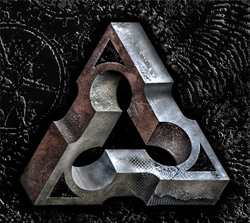Ask Guy 2
Q) I wondered if you have any good idea how to handle the skin on those more sensitive areas, i.e. the inside of the elbow joint/lower arm, the shoulder just above the crease of the armpit, the back of the neck/uppermost spine area?
A) These kind of areas can be especially tricky in tattoos that span over several skin types, where part of the piece is on tough skin and part is on delicate skin. The thing to do in a case like this is to outline the whole piece, making sure to turn down the machine when working the sensitive zones, and then work the piece to completion or almost-completion in sections, starting with the tender area (just to get it over with). You'll want to keep your machines running as lightly as possible in these areas. Since the skin is thinner and softer, it takes less power to put in the color. It's also easy to scar these areas of blow out lines and edges. Start with your machine running way too slow, and add power gradually until it's putting the color in. This way, there's no risk of pounding the skin too hard. Work with the machines in smooth, even overlapping ovals, since smooth motions are easier on the skin and less irritating for the client. This is way too little power to use in the other, tougher areas of skin. That's why you want to work these areas separately, since the right amount of power for the tougher parts will be too much for the tender areas, and vice-versa. More so than with other types of skin, you need to be sure not to enter the skin at too great an angle with your needles. The angle between the skin and the tube should be a minimum of forty-five degrees. Any less, and you risk slicing this delicate skin. Be sure to use a light layer of petroleum jelly on the area you're about to work, which makes it easier to clean up excess pigment without having to scrub the skin, which can get quite irritating later in the session. When the sensitive areas are finished and you're working near them in tougher zones, keep plenty of petroleum jelly on the finished area to protect it from stray gobs of pigment, which would later have to be painfully scrubbed off. You can even cover it with a paper towel while you're working nearby, eliminating the need to clean it almost entirely.























